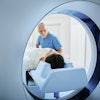
NEW YORK (Reuters Health), May 30 - Railway workers exposed to low-frequency magnetic fields may have an elevated risk of certain blood cancers, new study findings suggest.
In a study of more than 20,000 Swiss railway workers who were followed for 30 years, researchers found that certain workers' risk of myeloid leukemia and Hodgkin's lymphoma climbed in tandem with their exposure to very low-frequency magnetic fields.
Train drivers, who had the greatest exposure, were nearly five times more likely to develop myeloid leukemia than station managers, the workers with the lowest exposure to magnetic fields.
Drivers were also more than three times as likely to be diagnosed with Hodgkin's disease, a cancer of the lymph system.
The findings appear in the journal Occupational and Environmental Medicine.
Electric and magnetic fields (EMFs) are areas of energy surrounding electrical devices, including appliances, computers, electrical wiring and power lines. They also occur naturally in the environment.
Numerous studies have investigated whether human-made EMFs promote cancer. Overall, there is little evidence that everyday exposure to EMFs -- from power lines or electric blankets, for instance -- raise the risk of cancer in adults. Studies have been less clear about whether on-the-job exposure creates a cancer risk.
For the current study, researchers led by Dr. Martin Roosli of the University of Berne looked at the relationship between railway workers' cancer rates and their long-term exposure to extremely low-frequency magnetic fields.
Drivers had the greatest exposure to low-frequency magnetic fields, from spending long hours in train engine cabs. They had from 3- to 20-times the exposure of yard engineers, train attendants and station managers.
As mentioned, drivers also had the highest risks of myeloid leukemia and Hodgkin's disease, Roosli and his colleagues found. There was no link, however, between magnetic field exposure and other forms of leukemia or lymphoma, or brain cancer.
The reasons for the connection between magnetic field exposure and certain cancers aren't clear, Roosli told Reuters Health. As a precautionary measure, he and his colleagues say, new railway equipment should be designed to minimize magnetic field exposure, especially when it comes to drivers.
"We found considerable differences in the (magnetic field) levels for different engines," Roosli said. These differences, he explained, were mainly due to the construction of the engine -- such as the distance placed between the driver and the electrical supply.
Roosli and his colleagues stress that the findings apply to workers, whose exposures to magnetic fields are far higher than those of train passengers.
"Train passengers spend considerably less time in trains than the people with the occupations studied and their exposure levels and potential health risk are therefore negligible," the researchers conclude.
By Amy Norton
Last Updated: 2007-05-29 15:16:45 -0400 (Reuters Health)
SOURCE: Occupational and Environmental Medicine, May 24, 2007 online.
Related Reading
European radiology mobilizes to stave off MRI safety rules, March 9, 2007
Copyright © 2007 Reuters Limited. All rights reserved. Republication or redistribution of Reuters content, including by framing or similar means, is expressly prohibited without the prior written consent of Reuters. Reuters shall not be liable for any errors or delays in the content, or for any actions taken in reliance thereon. Reuters and the Reuters sphere logo are registered trademarks and trademarks of the Reuters group of companies around the world.

















